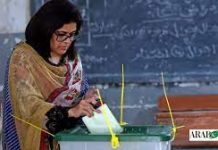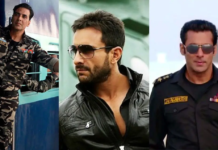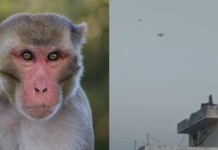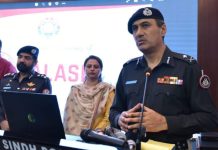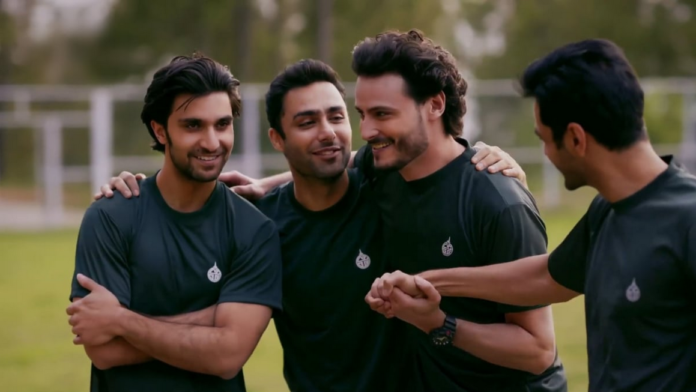At first, Ehd-e-Wafa didn’t exactly get off on the right foot with fans of the previous ISPR sponsored serial Alpha Bravo Charlie.
But with a new generation, the makers had to appeal to new sensibilities in a more digitally and visually diverse world.
However, after a few episodes, that disappointment turned into an acceptance; the hard truth that there is only one Shoaib Mansoor (writer and director of Alpha Bravo Charlie), and that everyone needed to calm down and accept the new serial on its own merits.
Though an ISPR sponsored serial is a heavy burden to carry, director Saife Hassan and writer Mustafa Afridi brought magic to our screens with four diverse characters that worked their way into our hearts over the course of 25 episodes.
Afridi has written more thoughtful serials in the past and his other collaboration with Saife Hassan, Sange Mar Mar, is still fresh in our memory for its stark realism and unrelenting tension. Ehd-e-Wafa, on the other hand, gave us a completely different vibe —young, fresh and optimistic.
This was not a serial about introspection or critical analysis, rather, a call for unity and inspiration for a better tomorrow.
A coming-of-age story
At the heart of the story lies the wonderfully depicted relationship dynamics between four friends; Afridi’s script focused heavily on Saad (Ahad Mir), the soldier’s life and Shahzain (Osman Khalid Butt), the feudal politician.
It’s one of the few shortcomings of this serial that Shehryar (Ahmad Ali Akbar), the civil servant and Shariq (Wahaj Ali), the journalist were not given the kind of attention or nuance their characters deserved. Though credit goes to both actors for still making their mark with what they were given.
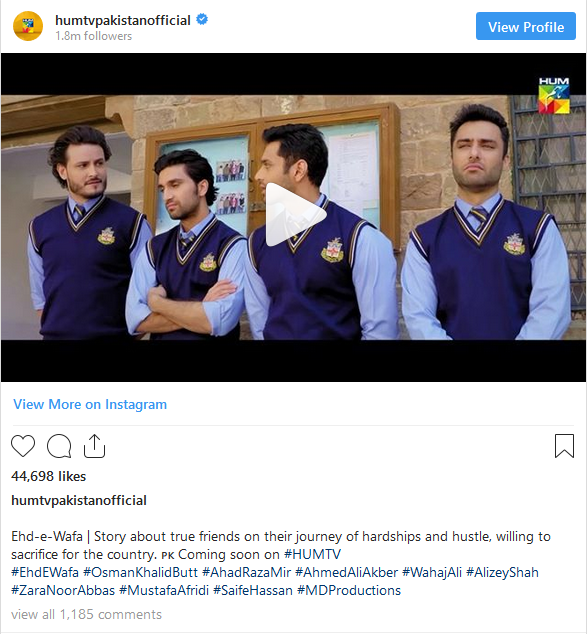
But as far as acting credits go, Shahzain was the most complicated role, with a lot of grey shades that Butt played with consummate skill, wheedling the audience on to his character’s side despite all his faults.
While Shahzain and Saad might argue for the majority of the serial, their affection never dies despite the angry rhetoric. It is just as well, Ahad Raza Mir can charm the birds of the trees, otherwise “Saada” would have been unbearable because he is so superhumanly perfect, with no goal he cannot achieve.
Perhaps we can slip in a reminder here, telling drama makers that it is our flaws that make us human and relatable.
Yet, the chemistry between all four friends was fantastic and they are off the cuff banter a huge part of this serial’s success.
While Saad and Shahzain fought, Shariq and Shehryar got on with their lives, worked hard and moved up and on like reasonable men.
Their characters had none of the need to dominate like the other two, their humility and compassion were great examples without turning them into saints.
Ahmad Ali Akbar played the group’s conscience with command and depth, which made his character Shehryar such a favorite with viewers.
Though an ISPR sponsored serial is a heavy burden to carry, however, director Saife Hassan and writer Mustafa Afridi brought magic to our screens with four diverse characters that worked their way into our hearts over the course of 25 episodes.
But perhaps the best takeaway from this serial has been a new level of understanding about the sacrifices ordinary soldiers make to keep the country safe.
While Saad the overachieving, privileged son of a Brigadier was one end of the spectrum, Gulzar Hussain, from Basti Malook, Dera Ghazi Khan, showed us what the average man can achieve with sheer determination and an adorable sense of humor.
Adnan Samad Khan may just give Ahad Raza Mir a run for his money on the charm quotient, but this welcome new addition to our screens stood his ground against all the more experienced actors and seems to be an absolute natural for comedy or the serious stuff, as required.
Shouldn’t women be more than love-interests?
Of the female characters, Zara Noor Abbas gave a spectacular performance as Rani. Shahzain’s supportive but never unquestioning wife provided a lot of the light to her screen husband’s negativity.
Alizeh Shah put in a great effort as Dr. Dua, but her best came out less as Mrs. Saad and more as the adopted daughter who at her weakest moments heard her father’s voice, telling her not to be afraid.
That kind of iconic writing is what sets this story miles apart from the usual zulm ki dastan on our screens. A woman in a difficult situation like Dua, picks up the pieces of her life and turns her situation around, instead of looking for Saad or anyone else to save her.
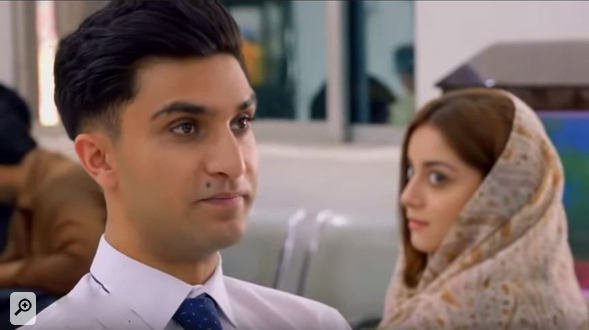
Yet, anyone who has seen Pinky Memsaab will tell you Hajra Yamin is a fantastic actress, and it’s really disappointing she was so underutilized here.
Similarly, Momina Iqbal, who played Masooma, was another character missing in action. Like Shazain and Rani, Masooma and Shehryar were a couple with fabulous on-screen chemistry, and I for one was hoping to see much more of them.
Obviously, every serial has constraints but for next time let us hope ISPR understands that women are not just “love interests”.
For a show that is promoting national unity, to leave 50% of the population behind as accessories is a tragedy in 2020.
“How is the tea? Exploring the Pakistan-India dynamic”
Overall, this serial had successfully focused on domestic issues, like land mafias, political corruption, media manipulation, however, the last episode took a much different tone.
Although a fan of the show, I found the teasers for the last episode—that showed the captured Indian Air Force pilot, Abhinandan Varthaman, being questioned —a little distasteful and unnecessary.
Apparently, this scene was so important that Pakistani superstar Humayun Saeed was called in to sit opposite and ridicule the prisoner of war.

Thankfully, the actual episode showed a lot more restraint and the focus remained on the gentlemanly and honorable way the Pakistan Army had treated the man who supposedly came to wreak havoc in Azad Kashmir.
In fact, after the iconic and obligatory lines about “How was the tea?“, the scene cut to Captain Saad detailing the rules of how to treat prisoners of war.
Now compare these few scenes to the way the Indian film industry has allowed itself to be used as an openly biased propaganda tool by India’s extreme right-wing nationalist government.
Not just vilifying Pakistan but also reducing its own Muslim countrymen (an already vulnerable minority) to outsiders and “others’ in their own country, facilitating and normalizing the communal violence and prejudice against them.
Ehd-e-Wafa gave us a completely different vibe —young, fresh and optimistic. This was not a serial about introspection or critical analysis, rather, a call for unity and inspiration for a better tomorrow.
I often complain as a critic that Pakistani minorities are underrepresented on our screens, the challenges they face often ignored with platitudes about equal treatment — yet the one thing we can be proud of still is that Pakistani media has not crossed the line into communal baiting ….yet.
Shahzain Malik’s mock interview with an incredibly subdued version of India’s hate-spewing anchor, Arnab Goswami, might have been funny if it were less true.
But a quiet word of warning to Pakistani media, it is a slippery slope from making an amusing skit to churning out propaganda that brainwashes audiences against reality, as India has been blinded by its complicit media.
India still has good journalists but their voices are increasingly being drowned out by theatrical propagandists. Pakistani media has for the most part stubbornly avoided such obsessions pointing out the truth even when it hurt, no matter how good the tea.
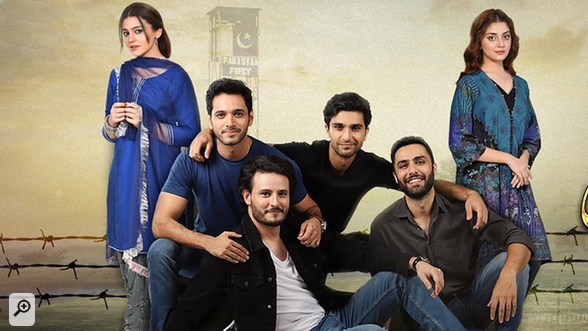
Team Ehd-e-Wafa seemed aware of this precarious balance and the finale was a great ending to one of the best serials I have seen.
Rahat Fateh Ali Khan’s wonderful rendering of the OST and the clever use of the song at different tempos to highlight the changing emotions of each scene was another plus.
ISPR, producer Momina Duraid, director Saife Hassan, author Mustafa Afridi and the entire team of Ehd-e-Wafa should take a bow for such a heartwarming show that gave the next generation some beautiful, iconic characters and scenes to remember.







